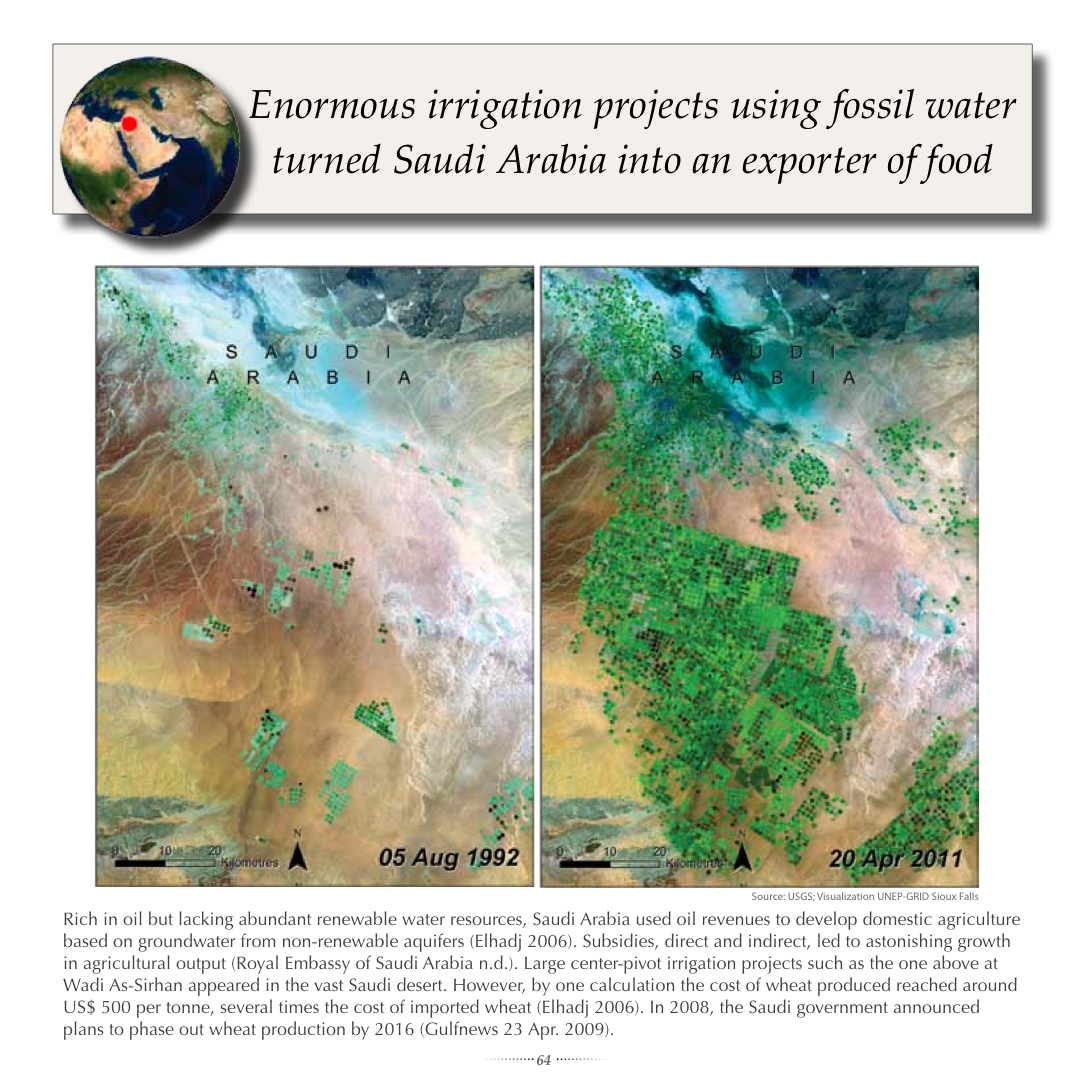resource
Nov. 1 2011
Resource
Irrigation Projects Using Fossil Water in Saudi Arabia (Keeping Track)
Description
Enormous irrigation projects using fossil water turned Saudi Arabia into an exporter of foodRich in oil but lacking abundant renewable water resources, Saudi Arabia used oil revenues to develop domestic agriculture based on groundwater from non-renewable aquifers (Elhadj 2006). Subsidies, direct and indirect, led to astonishing growth in agricultural output (Royal Embassy of Saudi Arabia n.d.). Large center-pivot irrigation projects such as the one above at Wadi As-Sirhan appeared in the vast Saudi desert. However, by one calculation the cost of wheat produced reached around US$ 500 per tonne, several times the cost of imported wheat (Elhadj 2006). In 2008, the Saudi government announced plans to phase out wheat production by 2016 (Gulfnews 23 Apr. 2009).
This graphic is part of the publication Keeping Track of Our Changing Environment.
